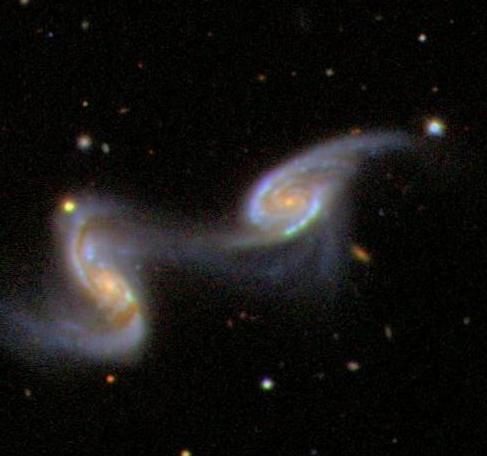Chris Peterson wrote:ChrisKotsiopoulos wrote:Ann wrote:
It is my firm belief that color is a fantastic tool...
Hi Ann. Thanks for pointing this out. I'll keep it in mind for the next HST process. I really want to represent coIors as accurately as possible.
Kind Regards,
Chris.
Color is a useful source of information. "Accurate" color, to the extent such a thing exists, often is not. The most useful way to utilize color depends on the wavelengths the original data was collected at, and the information the imager seeks to convey.
Most of what we know about the Universe comes from false color images and from data collected outside the range of human vision entirely. There's a reason that so little professional imagery is collected through RGB filter sets.
I agree that there is no such thing as "accurate" color in images. There are filters (and other detectors, such as the human eye) that are sensitive to different wavelengths, and then there is processing, to make sense of the data that has been detected by the filters, and to color-code the data in a meaningful way.
Take a look at the picture of the Double Cluster in Perseus at left. The red giant stars look particularly bright in this image. Is that wrong? Well, we may assume that the filters that were used for this image react more strongly to infrared light than to blue. Are the bright red stars
really brighter than the white-looking stars in the Double Cluster? Possibly, but the difference would be much smaller than this image suggests. The only way we can talk about "real brightness" in a meaningful way is if we mean "bolometric luminosity", which measures how much energy a source emits across the entire electromagnetic spectrum. Red giant stars are copious emitters of infrared light, so they are indeed "really bright". But blue supergiant stars emit a lot of ultraviolet light, so that they, too, are more energetic than they would appear to be in visual light.
As for the filters used for the Hubble data that was used for today's APOD,
this page tells us that the filters were F435W (B) and F 814W (I). Even if both filters are broadband ones, there is still a big difference between a filter centered on 435 nm and one centered on 814 nm. It should certainly be possible to differentiate between old yellow and young blue populations from the data that was detected by those filters.
But it is also possible to decide that the greatest color differences in the picture of Arp 240 is that between starlight and dust in Arp 240 itself on one hand, and that between light from Arp 240 and light from the background galaxies on the other.
It is all a matter of choice. But there
is a choice.
Ann
 Arp 240: A Bridge between Spiral Galaxies from Hubble
Arp 240: A Bridge between Spiral Galaxies from Hubble


